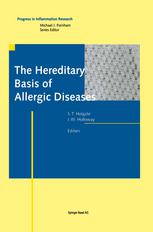

Most ebook files are in PDF format, so you can easily read them using various software such as Foxit Reader or directly on the Google Chrome browser.
Some ebook files are released by publishers in other formats such as .awz, .mobi, .epub, .fb2, etc. You may need to install specific software to read these formats on mobile/PC, such as Calibre.
Please read the tutorial at this link: https://ebookbell.com/faq
We offer FREE conversion to the popular formats you request; however, this may take some time. Therefore, right after payment, please email us, and we will try to provide the service as quickly as possible.
For some exceptional file formats or broken links (if any), please refrain from opening any disputes. Instead, email us first, and we will try to assist within a maximum of 6 hours.
EbookBell Team

4.0
46 reviewsAllergic diseases are complex and involve a range of environmental factors interacting with a susceptible genotype. The familial clustering of diseases, such as asthma and hay fever, has been recognised for over two centuries, but identification of the genetic basis to this had to await the molecular biological revolution. Estimates of the contribution that genetic factors make to asthma susceptibility range from 35% to 70%. For the majority of allergic diseases, segregation analysis has not identified a consistent Mendelian pattern of inheritance, which, when combined with multiple phenotypes and environmental interactions, has made identifying candidate genes especially difficult and, at times, controversial. Part of the difficulty has been lack of agreement over phenotype definitions, reduced power of studies to predict linkage and association, and, importantly, lack of true heterogeneity between populations. Despite these difficulties, the last decade has witnessed enormous progress in this field.